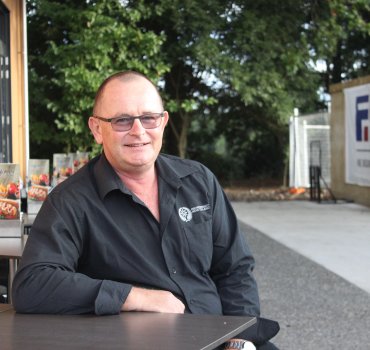

Paul Shaw is back in Cambridge after fighting thousands of hectares of fires in the past month.
Paul Shaw has been fighting fires all summer – on both sides of the Tasman.
Waikato’s principal rural officer spends most of his time assessing risks, issuing fire permits, managing rural fires and working with communities to reduce fire risk.
But in the past few weeks he’s spent time saving Australian towns from perishing, managing operations for eight massive fires covering tens of thousands of hectares in Tasmania as part of a 28-person deployment across Tasmania by Fire and Emergency New Zealand.
A day after returning from two weeks in Tasmania, he was called in to join the crew which fought the mid-February Nelson fire, the country’s largest forest fire since 1955.
“It was quite amazing, the scale and size of it, but it’s what we train for,” the Lakewood resident explained.
The fires have been so fierce that water would evaporate before reaching the flames.
“You don’t want fires to happen, but when they do, it’s an opportunity to put into practice what you spend years training for.”
“A total of 200,000 hectares in Tasmania have burned, plus they’ve got fires in New South Wales, Victoria… they were just really stretched for resources.
“We get called in on these really big ones where local resources won’t be able to help.”

Paul helped fight Tasmanian fires from the air, coordinating operations as the north west area’s aircraft officer.
With rescue efforts stretched thin, and raging fires sometimes impossible to extinguish, in some cases firefighters had to light their own fires to stop wildfires reaching towns. Such was the case with the 3000-hectare Lynch Hill fire, where Paul and his crews saved the town of Zeehan by burning a protective barrier under safe conditions so that it couldn’t catch fire again.
Stationed as the aircraft officer and operations manager for the area, Paul spent a lot of time in the air overlooking the vast stretches of fire, which continuously bellowed huge amounts of smoke into the sky.
“Flying around in that was pretty scary, because at one point we did actually get lost in the smoke.”
Once fires had reduced to a more manageable state for Australian crews, the Kiwis returned home only to be deployed to Nelson within 48 hours, Paul receiving the call during a BBQ with friends.
After arriving in Nelson as part of a national incident management team, Paul worked with 21 helicopters and two planes to keep on top of the fire. The operation was reduced to 10 helicopters and a ground crew raking out the last of the smouldering fires by the time he left.

Paul’s view from the helicopter could see flames for miles in north west Tasmania.
Over the two-week burn, 2300 hectares were blackened and over 2500 people were evacuated from their homes.
A brief break followed before Paul returned back to work last week.
He now spends half his time residing in Cambridge with wife Wendy, and half the time at their other home in Matarangi, where fire risk is at its highest in the Coromandel.
Meanwhile, Paul’s colleagues continued to battle the flames in both Tasmania and Nelson this week.
They were hoping to strangle the Nelson fire inside a “blackout zone earker this week, by which time a ban on water sprinklers was making bigger headlines.
The dangers of fire fightings were highlighted when pilot Bill Reid suffered minor injuries making a hard landing while fighting wildfire near Eves Valley.
In Tasmania the major fires were out, but a check on the Tasmanian Fire service earlier this week showed there were more than 30 vegetation fires.
The major blazes earlier this month, including in the Tasmanian Wilderness World Heritage Area (TWHHA) and expected to coast tens of millions of dollars.








